개인적으로 피카소보다 마티스를 더 좋아한다.
그리고 그의 노년기의 종이작업은 디자인의 선구자이다.
감각적인 색채, 노련한 형태감각은 페인팅을 방불케하는 완벽성을 보여준다.
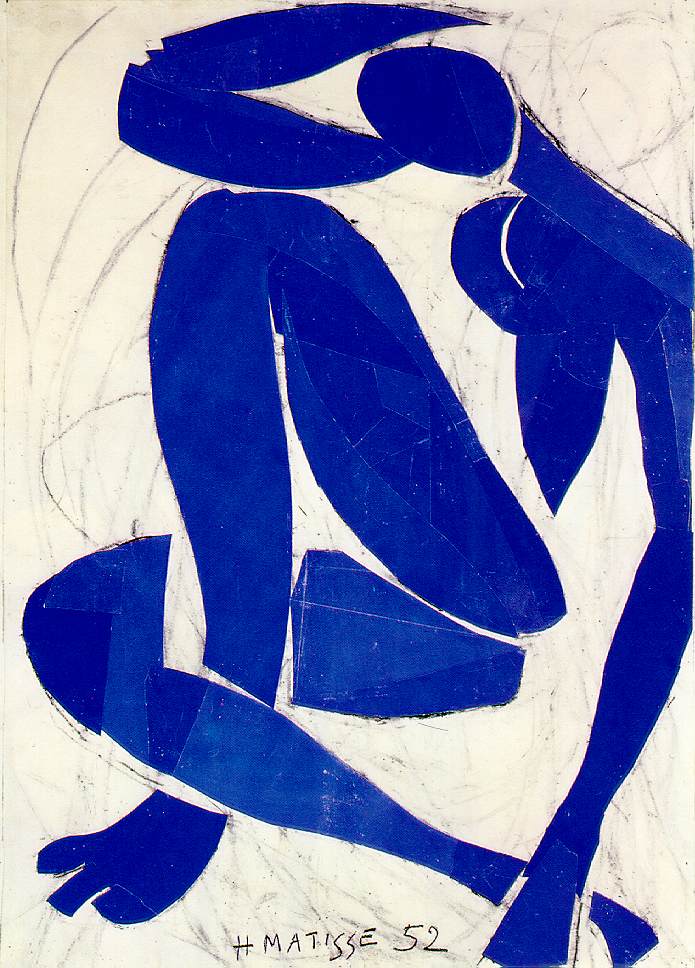
Blue Nude IV. 1952. Gouache on paper cut out. Musée Henri Matisse, Nice, France
가위를 들고 색종이의 형태를 오리면서 주제를 완성하는 방법. 마티스는 가위는 훌륭한 소묘도구. 앉아있는 여자의 알몸을 그린 작품.
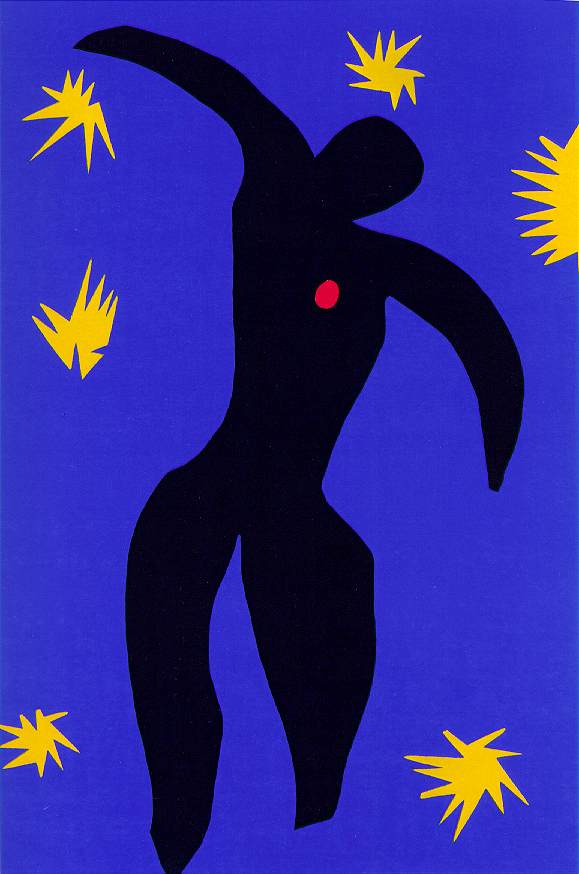
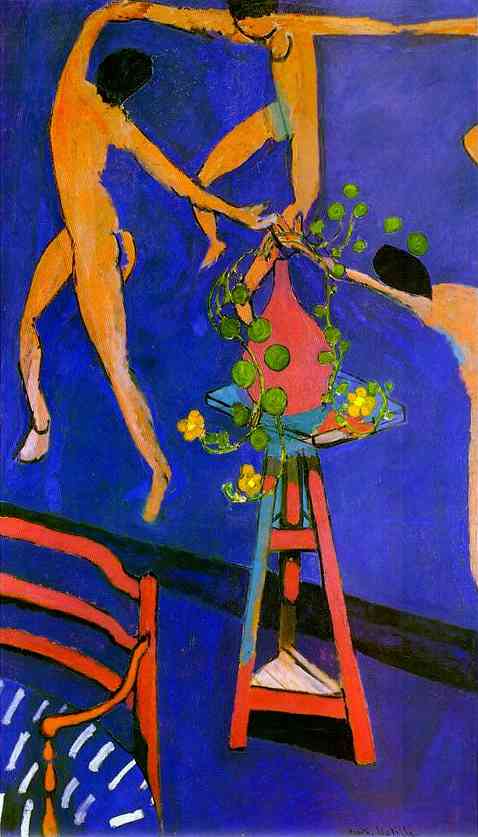
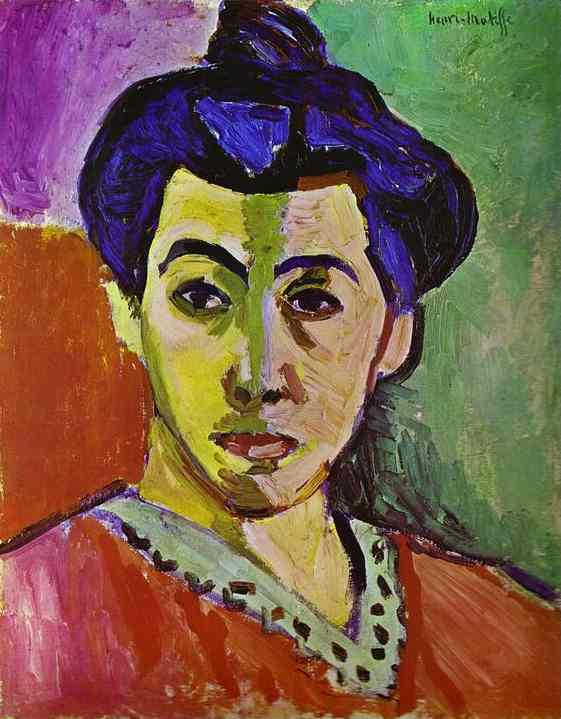
Madame Matisse, "The Green Line" ( La Raie verte). 1905. Oil on canvas. Statens Museum for Kunst, Copenhagen, Denmark.
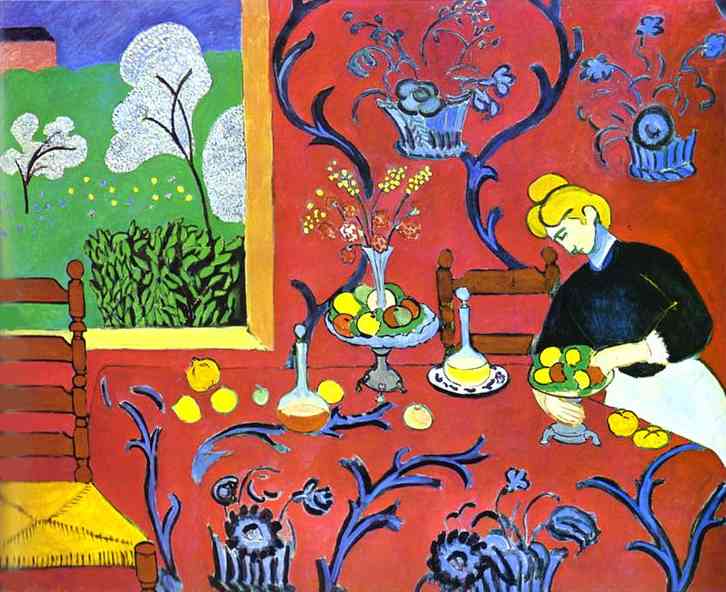
Harmony in Red. 1908. Oil on canvas. The Hermitage, St. Petersburg, Russia.
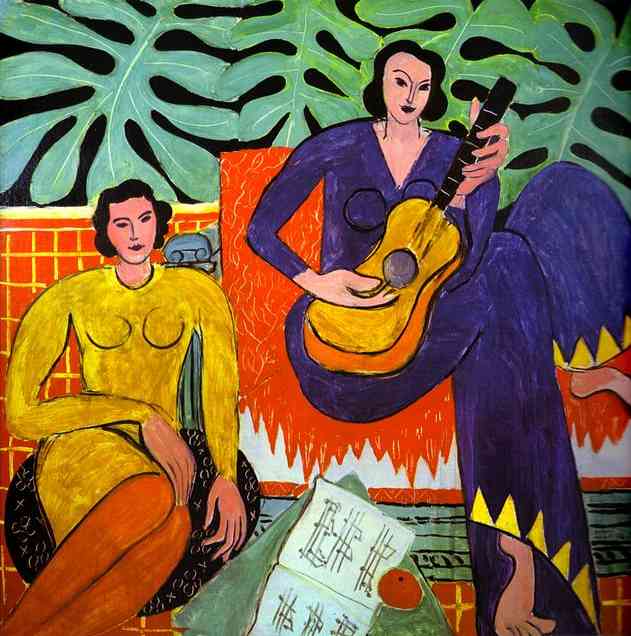
Music. 1939. Oil in canvas. Albright-Knox Art Gallery, Buffalo, NY, USA
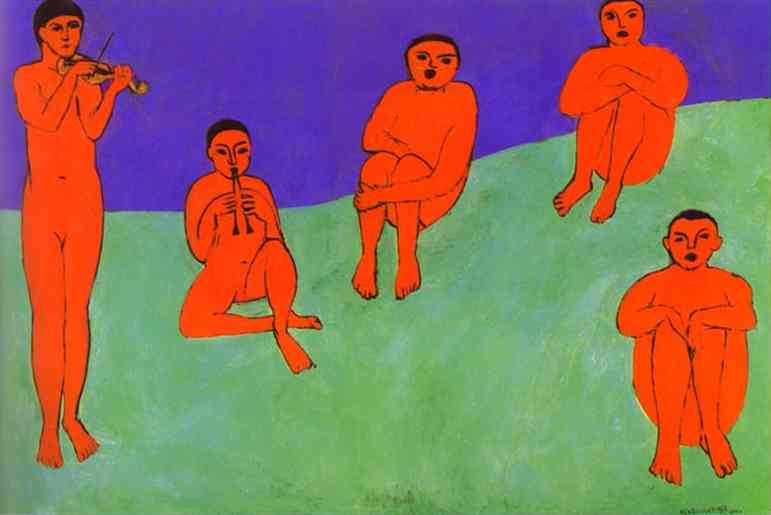
<음악>,<춤> 사람들은 빨강, 하늘은 파랑, 땅은 초록- 색채는 단순.
<음악>은 두사람은 악기를, 세사람은 노래를 부르고 있다.
<춤>에서는 아무것도 입지 않은 자유로운 사람들이 손을 잡고 덩실덩실 춤을 추고 있다.
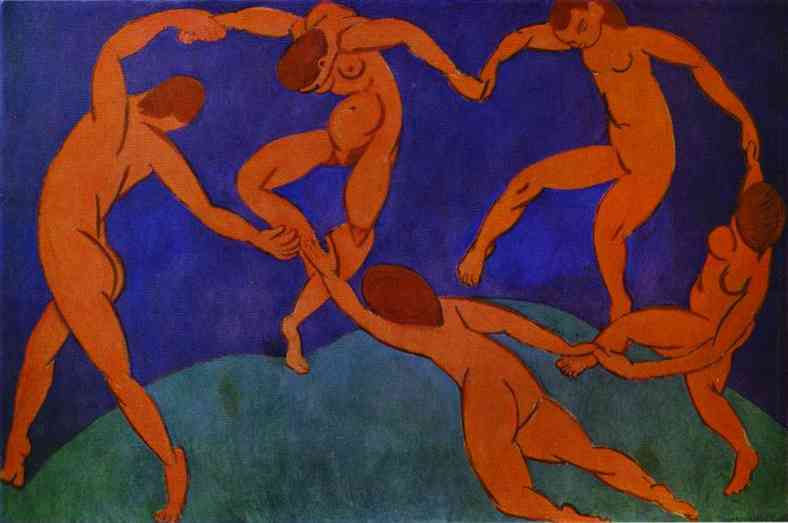
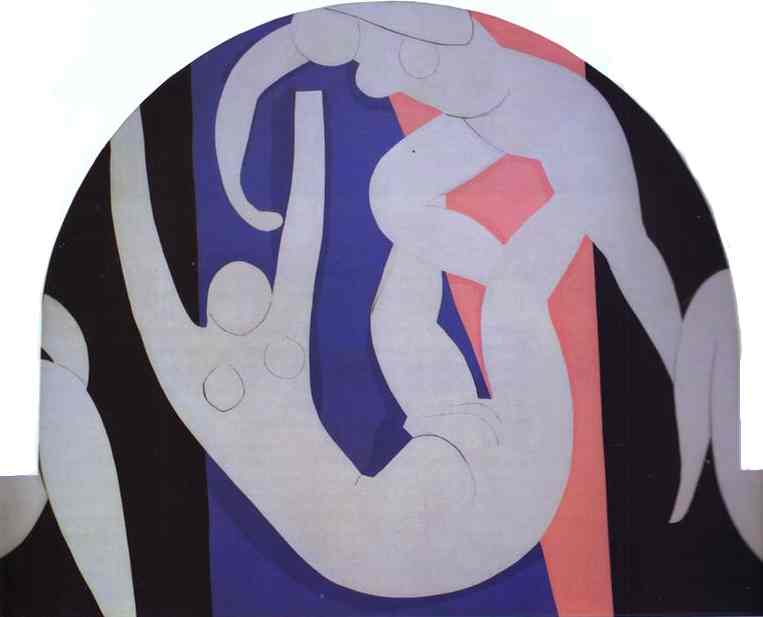
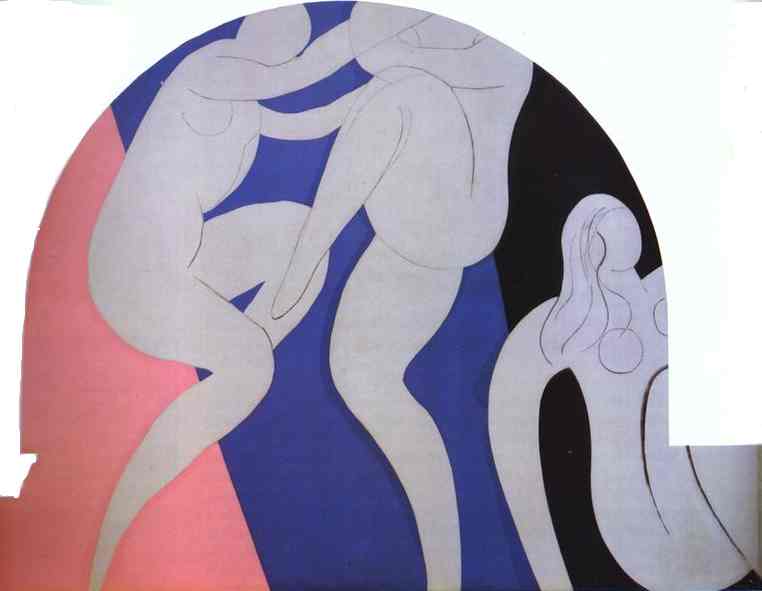
The Dance. 1932-33. Oil on canvas. Barnes Foundation, Lincoln University, Merion, PA, USA
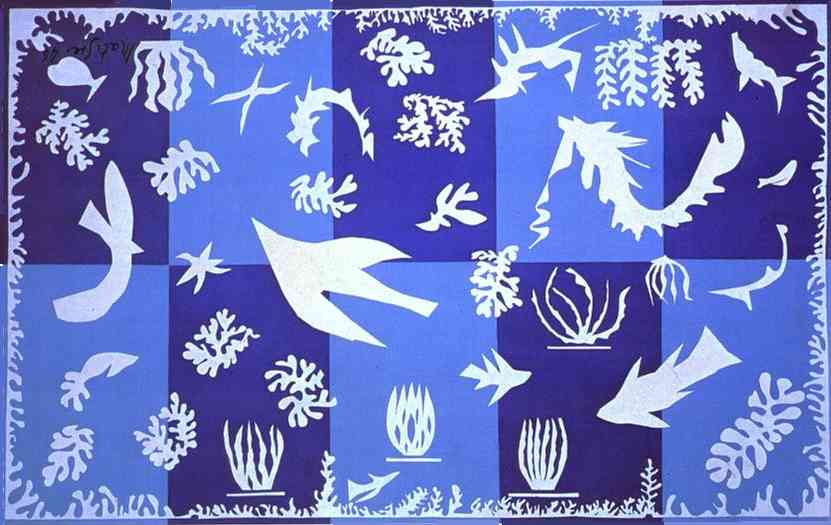
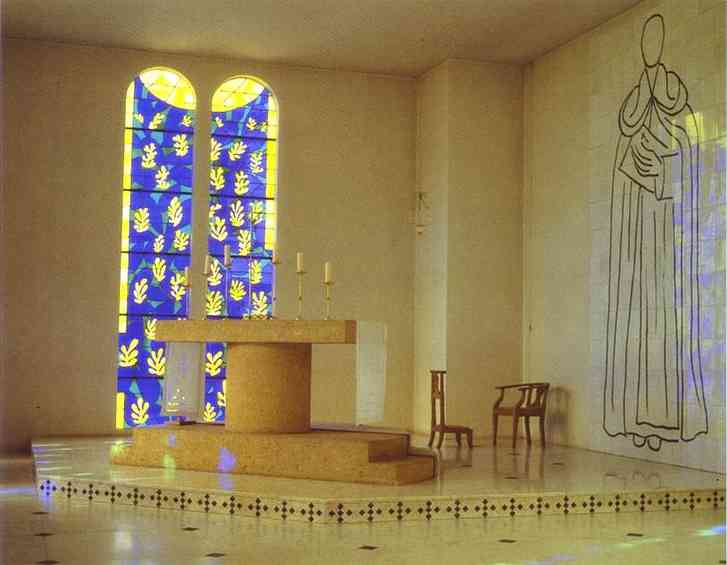
artist often regarded as the most important French painter of the 20th century. The leader of the Fauvist movement around 1900, Matisse pursued the expressiveness of colour throughout his career. His subjects were largely domestic or figurative, and a distinct Mediterranean verve presides in the treatment.
Matisse, Master of Color
The art of our century has been dominated by two men: Henri Matisse and Pablo Picasso. They are artists of classical greatness, and their visionary forays into new art have changed our understanding of the world. Matisse was the elder of the two, but he was a slower and more methodical man by temperament and it was Picasso who initially made the greater splash. Matisse, like Raphael, was a born leader and taught and encouraged other painters, while Picasso, like Michelangelo, inhibited them with his power: he was a natural czar.
Matisse's artistic career was long and varied, covering many different styles of painting from Impressionism to near Abstraction. Early on in his career Matisse was viewed as a Fauvist, and his celebration of bright colors reached its peak in 1917 when he began to spend time on the French Riviera at Nice and Vence. Here he concentrated on reflecting the sensual color of his surroundings and completed some of his most exciting paintings. In 1941 Matisse was diagnosed as having duodenal cancer and was permanently confined to a wheelchair. It was in this condition that he completed the magnificent Chapel of the Rosary in Vence.
Matisse's art has an astonishing force and lives by innate right in a paradise world into which Matisse draws all his viewers. He gravitated to the beautiful and produced some of the most powerful beauty ever painted. He was a man of anxious temperament, just as Picasso, who saw him as his only rival, was a man of peasant fears, well concealed. Both artists, in their own fashion, dealt with these disturbances through the sublimation of painting: Picasso destroyed his fear of women in his art, while Matisse coaxed his nervous tension into serenity. He spoke of his art as being like "a good armchair"-- a ludicrously inept comparison for such a brilliant man-- but his art was a respite, a reprieve, a comfort to him.
Matisse initially became famous as the King of the Fauves
, an inappropriate name for this gentlemanly intellectual: there was no wildness in him, though there was much passion. He is an awesomely controlled artist, and his spirit, his mind, always had the upper hand over the "beast" of Fauvism.
The experimental years
Matisse's Fauvist years were superseded by an experimental period, as he abandoned three-dimensional effects in favor of dramatically simplified areas of pure color, flat shape, and strong pattern. The intellectual splendor of this dazzlingly beautiful art appealed to the Russian mentality, and many great Matisses are now in Russia. One is The Conversation (1909; 177 x 217 cm (5 ft 9 3/4 in x 7 ft 1 1/2 in)) in which husband and wife converse. But the conversation is voiceless. They are implacably opposed: the man-- a self portrait-- is dominating and upright, while the woman leans back sulkily in her chair. She is imprisoned in it, shut in on all sides. The chair's arms hem her in, and yet the chair itself is almost indistinguishable from the background: she is stuck in the prison of her whole context. The open window offers escape; she is held back by an iron railing. He towers above, as dynamic as she is passive, every line of his striped pyjamas undeviatingly upright, a wholly directed man. His neck thickens to keep his outline straight and firm, an arrow of concentrated energy. The picture cannot contain him and his head continues beyond it and into the outside world. He is greater that it all, and the sole "word" of this inimical conversation is written in the scroll of the rail: Non. Does he say no to his intensity of life? They deny each other forever.
Supreme decoration
But denial is essentially antipathetic to Matisse. He was a great celebrator, and to many his most characteristic pictures are the wonderful odalisques he painted in Nice (he loved Nice for the sheer quality of its warm, southern light). Though such a theme was not appreciated at the time, it is impossible for us to look at Odalisque with Raised Arms (1923; 65 x 50 cm (25 1/2 x 19 3/4)) and feel that Matisse is exploiting her. The woman herself is unaware of him, lost in private reverie as she surrenders to the sunlight, and she, together with the splendid opulence of her chair, he diaphanous skirt, and the intricately decorated panels on either side, all unite in a majestic whole that celebrates the glory of creation. It is not her abstract beauty that attracts Matisse, but her concrete reality. He reveals a world of supreme decoration: for example, the small black patches of underarm hair on the odalisque are almost a witty inverted comma mark round the globes of her breasts and the rose pink center of each nipple.
Sculpting in paper
Picasso and Matisse were active to the end of their lives, but while Picasso was preoccupied with his ageing sexuality, Matisse moved into a period of selfless invention. In this last phase, too weak to stand at an easel, he created his papercuts, carving in colored paper, scissoring out shapes, and collaging them into sometimes vast pictures. These works, daringly brilliant, are the nearest he ever came to abstraction. Beasts of the Sea (1950; 295.5 x 154 cm (9 ft 8 in x 5 ft 1/2 in)) gives a wonderful underwater feeling of fish, sea cucumbers, sea horses, and water-weeds, the liquid liberty of the submarine world where most of us can never go. Its geometric rightness and chromatic radiance sum up the two great gifts of this artist and it is easy to see why he is the greatest colorist of the 20th century. He understood how elements worked together, how colors and shapes could come to life most startingly when set in context: everything of Matisse's works together superbly.
'History of Arts > 20C' 카테고리의 다른 글
| salvador dali (0) | 2020.05.26 |
|---|---|
| Pablo Picasso (0) | 2020.05.26 |
| marc chagall (0) | 2020.05.18 |
| *현대미술은 왜 현대미술인가? (2) | 2020.05.18 |
| 키키 스미스는 (1) | 2012.10.19 |



